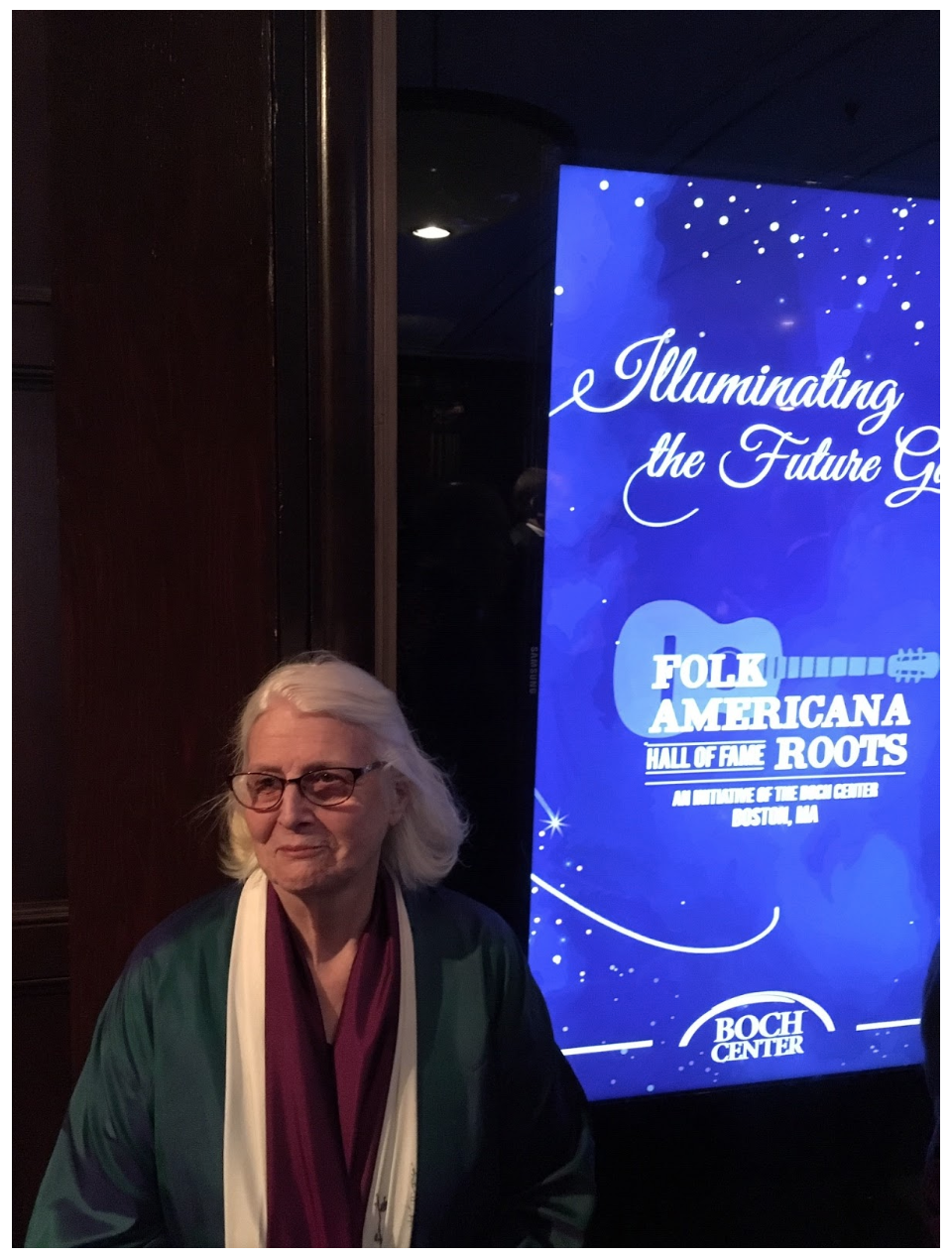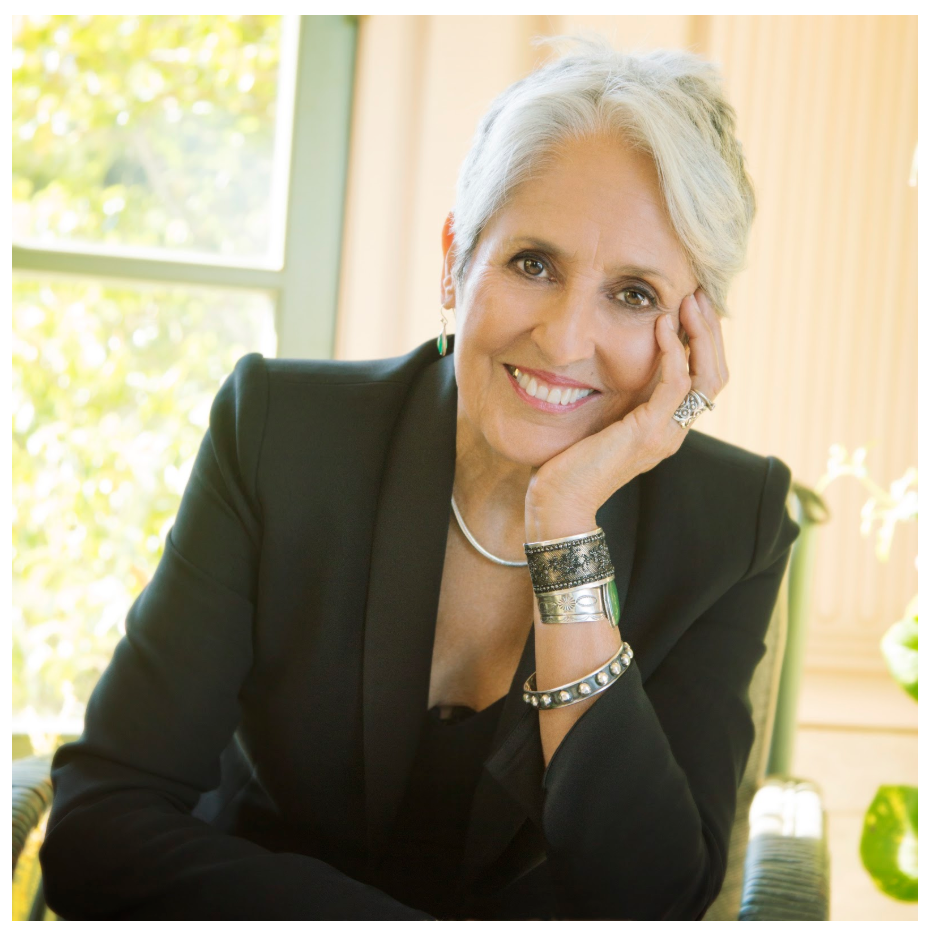An Interview with Betsy Siggins: Collective Music (Passim At 60)
I remember the first time I walked into Club Passim, and you probably do too. It was one of those feelings of disbelief: this place that has played such a role in the mythology of the music I love actually exists. And that was followed by surprise: I had thought it would be bigger. I’m not sure exactly how large I imagined it, given how outsized it was in my understanding of folk music, but I distinctly remember being struck that you could sit in the back of the audience and have a conversation with the performer without raising your voice. On Thursday, Club Passim celebrates 60 years of folk music at the Shubert Theater with a roster of musicians who owe much of their careers to the early support of Passim.
I had the distinct pleasure of chatting with three people responsible for the legacy of Passim: Betsy Siggins, who managed Club 47 and returned to run Passim in the 1990s; Jim Wooster, Executive Director; and Matt Smith, the managing director and mentor to countless Boston musicians.
Betsy Siggins is a major reason that New England has a vital folk music community. She supports up and coming artists, but also has curated the folk music archives at The University of Massachusetts at Amherst. She founded Folk New England. She has been at the forefront and in the background, and we talked about this life in music, which often comes down to welcoming others and building community–sharing your couch, cooking a meal, offering a listening ear.
RLR: Just starting with a big question: 60 years of Passim—what does that mean to you?
BS: I’ve been sixty years in the Folk world, but not at Passim for sixty years. I was at Club 47, which is now Club Passim, and then I was at the Smithsonian, working for the Festival of American Folk Life, which was on the Mall. I was at the earliest Newport Folk Festivals forever. But I’ve been around, and always connected to folk music, except when I ran soup kitchens and food pantries for homeless people in Harlem.
RLR: I know you did that very different work in New York; do you think it was helpful to do something completely different?
BS: The big picture was that it was always about caretaking. Being friends with, or mentoring [musicians], or looking after clients in the soup kitchen world. It always came down to my need to boss people around and be a caretaker.
RLR: When you think about those mentoring conversations, what are some of the things you helped folks consider?
BS: The community that we built in Cambridge, Mass in the sixties, we’re all still friends now. That’s a testament to not only how strong that community was, but how strong the music scene was, and what it meant to all of us to keep growing together. I work informally with a group of younger musicians here on Cape Cod. Although there’s a lot of distance between our ages, it’s still kind of the same encouraging [approach], only there’s all this time in between for me to know more, and to be more thoughtful about what they can and cannot do.
RLR: I listened to your interview on Basic Folk and you said you didn’t want to be a musician because you liked the world but not the work.
BS: I honestly feel my role was cut out for me the way it happened and if I were to have pushed harder, it would have been false. I liked the cooking, I liked the cleaning—no, I didn’t like the cleaning up, what am I saying? [Laughs] I liked the late night parties after somebody had played at the club. It was the experiences of having southern Black blues musicians come and stay in our house. Those were segregated times and those guys couldn’t stay in a hotel. It was disgraceful. But for us, it was a treasure trove having people like Reverend Gary Davis or Mississippi John Hurt sleeping on your couch. You can’t make that stuff up.
RLR: And part of the work you did was bringing Black musicians to predominantly white college campuses…
BS: That was Ralph Rinzler’s fault. He was a mentor of mine and Ralph was the head of the Festival of American Folk Life on the Mall. We had just moved there in ’68. Club 47 closed and Bob got a post-doctorate job in Washington, DC. Ralph and I had been friends for five or ten years before that, because the Greenbriar Boys played the Club a lot and we had a nice friendship. He said, “If you’re looking for something to do, I’ve got this “little” festival on the mall.” And I said, “OK, point me in the direction.” I worked with him for four or five years every summer. They honored a different state each summer, which meant they brought the musicians, the artisans, artists, the food, the heads of other cultures from that state. I would be working with the Native American tribes who came to the Mall. Again, it was that caretaking role–caretaking with a small-c, helping them acclimate to being on display and making them more comfortable.
Ralph had Mike Seeger and I go south to pick up Bessie Jones and the Sea Island Singers and Mississippi John Hurt. That’s when we took them to a couple of white colleges in Louisiana or Arkansas. That grew out of Ralph’s experience at Swarthmore College, where they had a folk song society very early on, and Ralph knew the beauty of collective music of anyone, and anywhere. Those colleges were most wonderful, reverent, kind audiences and it changed the picture a lot. It started with one or two musicians and it grew, so there was more exposure to southern American music than most places had experienced.
The other piece was working around at the Newport Folk Festivals in the early days. Ralph was on the Board of Directors, along with Bob Jones and Jim Rooney, who is still one of my good friends to this day. They were looking for Black musicians to bring north, but again there was the hotel issue. So Newport was kind and wise and rented all those big old houses—I don’t mean the mansions—but we all stayed there together, and we did the cooking, and we didn’t do the cleaning [laughs] but it was an extraordinary experience to have breakfast with Mavis Staples. The concept was to get them to Newport, and then get them to Club 47, and then to the Smithsonian. We were the touchstones for all of those major folk events. I had the Staples Singers at Club 47 for four nights in a row. The Paul Butterfield Band came in for five nights, and did three shows a night because they couldn’t make any money if we didn’t do it that way. We were all exhausted, but it’s a great memory!
The other thing that stands out is Ralph sent us to Louisiana one year. That’s when I met Dewey Balfa and the Arduion Family. The Ardiuons were a Black zydeco group and The Balfa Brothers were Cajun. Those friendships were so dear. Those groups would stay with friends of ours in Washington, DC. I got invited out to Dewey’s house when I was in Louisiana and honestly, it was like a movie set. Everyone was playing the fiddle, in the kitchen; the jambalaya was cooking. After dinner and some fiddle music, Dewey said, “Would you like to go see the Arduions? They’re having a dance tonight.” And was I gonna say no?! We drove in a truck or a van down a dark, dark road, and it seemed like forever. And we arrived at a Quonset hut and that’s where the Arduions had their weekly dances. One of Arduions came out and said hello to me and he said, “Now, do you know how to do the two-step?” I said, “I do not.” So that night I learned how to do the two-step.
RLR: I read last year that three-quarters of white Americans don’t have a single friend of color. And, of course, America was designed to be segregated. But, given your experiences, what would need to shift for us not to live so separately?
BS: A whole re-education of the American psyche. Your question made me think about the early audiences at Newport. There were so many Black musicians that they brought north, and I can recall audiences that were tremendously mixed. I can’t remember how that happened; Jim Rooney probably can. There was a year at Newport, I’m going to say ’65-ish. We weren’t at Fort Adams yet; we were in a field and one afternoon, they cut the field up in pie shapes, mostly with Black musicians. So you could go from one little stage to the next and you could hear blues, and the next you’d hear string bands, and so on. It was amazing. It’s where I met Robert Pete Williams and shook his hand, and I broke into tears.
RLR: Listening to you talk about those early audiences, it makes me reflect on the fact that the lineup is often diverse, but the audience is not. It’s mostly white folks.
BS: People can’t afford those concerts anymore. If Jay Sweet didn’t take pity on me, I wouldn’t be able to go either.
RLR: My first time going was in 2015, and we met briefly in the Museum, which is my favorite stage.
BS: I could spend the whole three days in that Museum, because that music is dear to me. Last summer, I got to spend time with John Cohen, which I was very glad to do. And Jack Elliott, whom I’ve known since he was in diapers. And Alice Gerrard. John Cohen probably gave his next-to-last performance there this summer.
RLR: Thinking about the folks who played at Club 47 and Passim, people know Joan Baez and Bob Dylan but not necessarily people like Eric Von Schmidt, who was such a big influence. Who is a performer that you think hasn’t had the recognition s/he deserves?
BS: Spider John Koerner. Jackie Washington Landrone. Dayle Stanley, although she doesn’t sing anymore. She had three octaves, and she was a kid from the suburbs of Boston, working class folks, and she could sing the paint off a wall.
RLR: It’s very special to have Joan Baez presenting the Lifetime Achievement award to you. You have said she’s had the greatest influence on you.
BS: She and my then-husband Bob Siggins were my musical mentors and taught me more than they’ll ever know about music, the vitality, and the passion that comes with playing.
There are a few tickets left for tomorrow’s celebration. You should probably be there. But if you can’t make it, get down to Club Passim soon. It’ll do you good.


